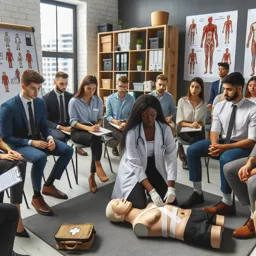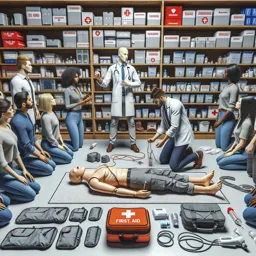Introduction to School First Aid
School first aid is a critical part of maintaining safety and health within educational settings. Since accidents and sudden illnesses can happen at any time, having the right knowledge, training, and equipment can make a life-saving difference for students and staff.
Why School First Aid Matters
Because children spend much of their day at school, injuries or medical emergencies are likely to occur during class, recess, or extracurricular activities. Immediate and effective first aid can:
- Prevent further injury
- Promote faster recovery
- Reduce the severity of accidents
- Provide reassurance and comfort to injured students
Common School First Aid Situations
Schools often encounter various first aid scenarios, such as:
- Cuts, scrapes, and abrasions
- Bruises and bumps
- Nosebleeds
- Sprains and strains
- Allergic reactions
- Asthma attacks
- Burns
- Choking incidents
- Fainting or dizziness
Essential First Aid Supplies for Schools
A well-stocked first aid kit is the foundation of effective emergency response. It should include:
- Sterile gauze pads and bandages
- Antiseptic wipes and solutions
- Adhesive tape and band-aids
- Instant cold packs
- Disposable gloves
- Scissors and tweezers
- CPR face shield or mask
- Emergency contact list
- Epinephrine auto-injectors (for severe allergies)
- Inhalers (for students with asthma)
Basic First Aid Procedures in Schools
All school staff should be familiar with basic first aid procedures. Key examples include:
Treating Minor Cuts and Scrapes
- Wash hands and wear disposable gloves.
- Clean the wound with water and antiseptic.
- Apply pressure to stop bleeding.
- Cover with a sterile bandage.
Managing Nosebleeds
- Have the child sit and lean forward.
- Pinch the soft part of the nose for 10–15 minutes.
- Apply an ice pack if available.
Handling Allergic Reactions
- Identify symptoms such as hives, swelling, or difficulty breathing.
- Administer an epinephrine auto-injector if prescribed and call emergency services.
- Monitor and comfort the student until help arrives.
First Aid Training for School Staff
Regular first aid training for teachers, administrative staff, and even older students ensures a quick and effective response during emergencies. Training should cover CPR, injury management, and school-specific emergency protocols.
Creating a Safe School Environment
Beyond first aid, schools should foster a culture of safety. Encourage students to report hazards, maintain good hygiene, and participate in emergency drills. A proactive, team-oriented approach ensures the entire school community feels prepared and supported.
Conclusion: Prioritizing Student Safety
School first aid is more than a protocol—it’s a commitment to student safety and wellbeing. By maintaining proper supplies, providing staff training, and cultivating a safe environment, schools can protect students and ensure a secure place for learning and growth.




























